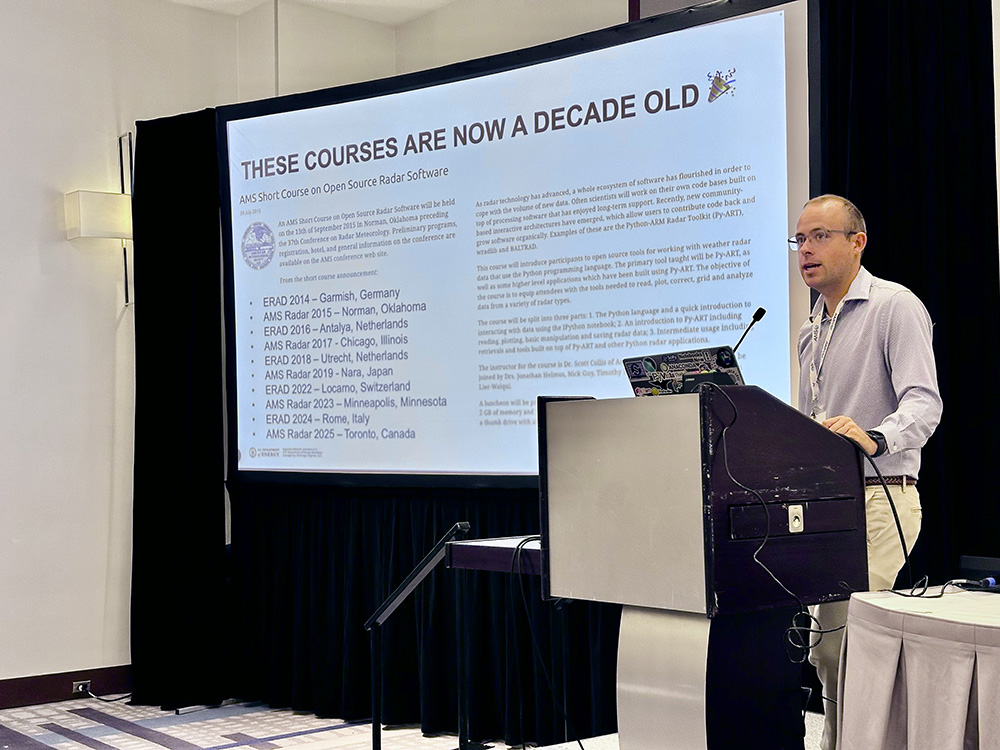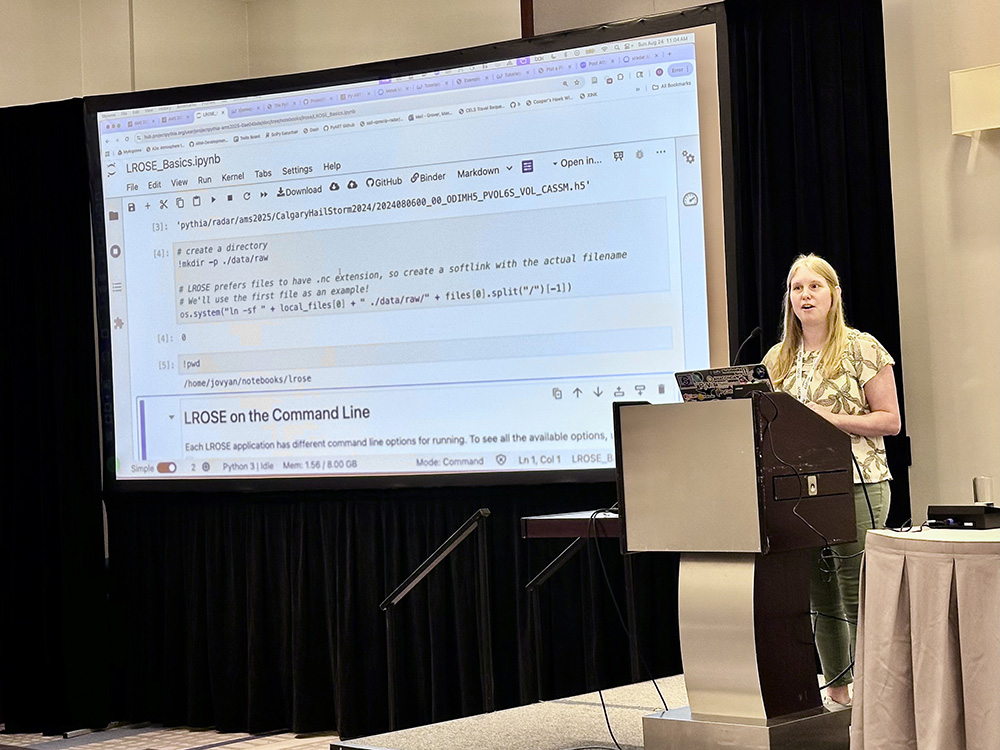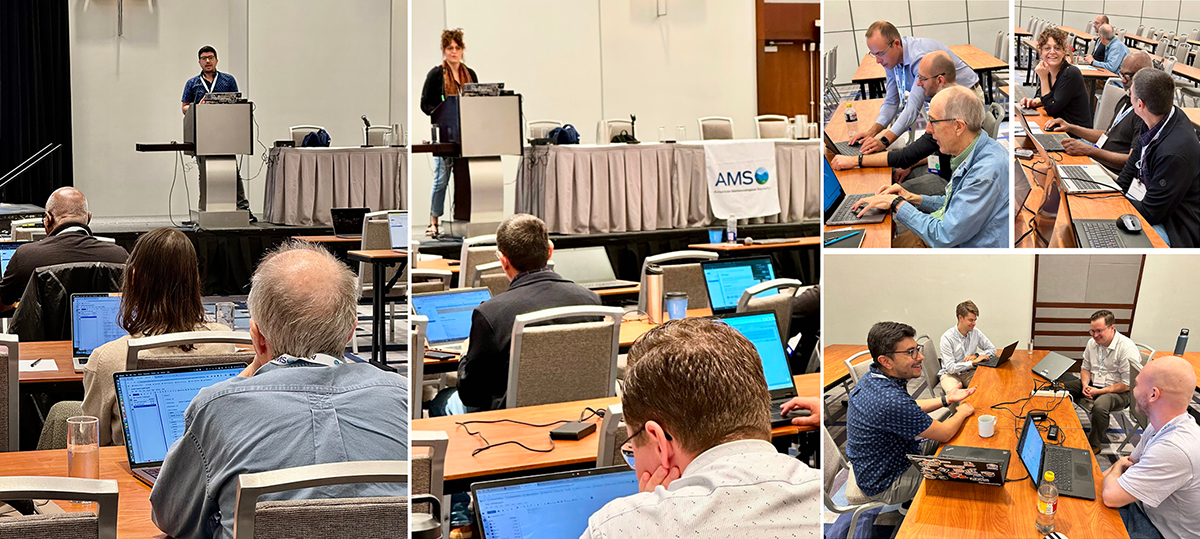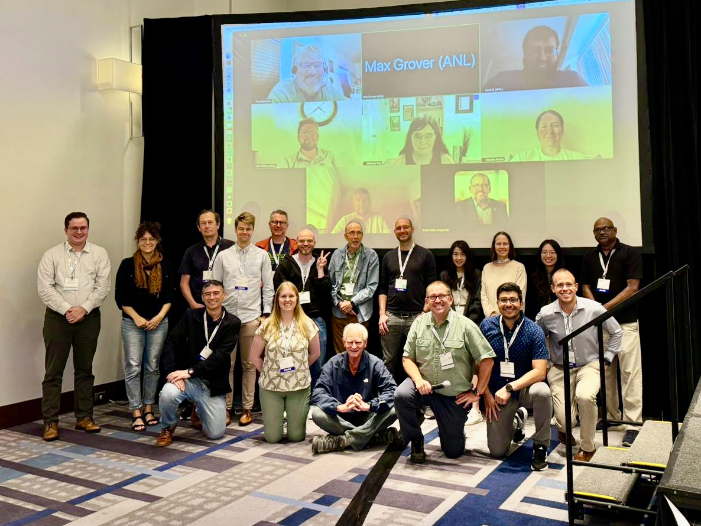Students Engage With ARM at Open Radar Science Short Course
Published: 26 September 2025
Editor’s note: Scott Collis of Argonne National Laboratory and former Argonne colleague Max Grover provided the following blog post.

On a sunny day in Toronto, Canada, 20 scientists and engineers decided it was a great day to learn more about open radar science. In its 10th edition, the Open Radar Science Short Course was held August 24, 2025, at the 41st International Conference on Radar Meteorology, hosted by the American Meteorological Society (AMS).
ARM staff Scott Collis, Max Grover, Bobby Jackson, Joe O’Brien, and Zach Sherman were instructors along with collaborators from the National Science Foundation National Center for Atmospheric Research (NSF NCAR), Colorado State University, and the University of Illinois Urbana-Champaign.
The course, which moves between the AMS conference and the European Radar Conference (ERAD), is an multi-agency and international collaboration that teaches attendees the latest tools and methods in the open radar software stack. Tools of focus include the Python ARM Radar Toolkit (Py-ART), led and supported by DOE’s ARM User Facility.
Atmospheric radar is a key tool used internationally to understand the physics behind clouds and storms and improve our predictive understanding of our planet. Radar systems have been used extensively to study wind-producing storms such as derechos, which have an impact on our energy grid. ARM has deployed a large and diverse network of radars dedicated to understanding the physics of our earth system.

Open science involves the publication of codes, papers, data, and teaching material in a Findable, Accessible, Interoperable, and Reusable (FAIR) manner.
The collaboration with Project Pythia, an NSF-supported project democratizing geophysical scientific knowledge with a focus on the Python programming language, enabled a strong hands-on component. Students dug deep into the tools and data (provided by Environment Canada, as local data are typically used for short courses when possible) through the use of JupyterLab hosted on a cloud-based platform.
At this short course, there was a strong collaboration between Py-ART and the Lidar Radar Open Software Environment (LROSE), which is led out of NSF NCAR and Colorado State University. One key aspect of these courses is interoperability between the different projects and packages.
During the 10th course, the focus was on storm tracking. For the first time ever, the Thunderstorm Identification, Tracking, Analysis and Nowcasting (TITAN) code base was used in a Project Pythia environment, and storm tracks were also identified using the Tracking and Object-Based Analysis of Clouds (tobac). All packages use a mix of open science tools to perform data quality corrections, and students were able to dig deep into differences in how storms were tracked.
Students came from many backgrounds, including meteorological services, academia, and private industry.
After instructors delivered the interactive materials on selected tools, students formed four groups to work on the following projects that interested them:
- storm tracking using TITAN and investigating sensitivities to thresholds
- quantitative precipitation estimates, investigating differences in extreme precipitation
- quasi-vertical profiles derived using cloud-optimized data
- general hacking and Py-ART basics.


Students brought their own data and workflow challenges and benefited from one-on-one time with open software developers and project leads.
Students spent a few hours working in teams on the projects and presented their findings to the class. These hands-on activities are vital for learning by doing, and students will take new open science workflows back to their institutions.
Despite a few hiccups, mainly with being too adventurous with data volumes, students reported that they appreciated the project work. Over 90% reported they would adopt the new tools they learned.
ARM has been a key contributor to these short courses since their inception at ERAD 2014 in Garmisch-Partenkirchen, Germany. This was at the same time Py-ART was launched. These short courses are increasing the impact of ARM tools and data, bringing in new users, and, as we are pleasantly finding out, turning users into contributors who grow these community packages.
We also thank the AMS staff, the conference organizers, and our instructors. Course materials can be found on the short course web page and executed at home.
From Scott Collis: On a final note, Max Grover left ARM and Argonne National Laboratory for a new role after the August 2025 short course and radar conference. Max was a key leader of these courses since ERAD 2022 in Locarno, Switzerland. Thanks to Max for his vision and leadership, and we wish him the best in the future.
Keep up with the Atmospheric Observer
Updates on ARM news, events, and opportunities delivered to your inbox
ARM User Profile
ARM welcomes users from all institutions and nations. A free ARM user account is needed to access ARM data.


















